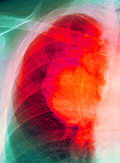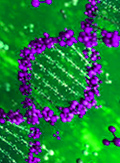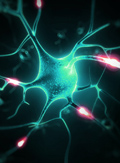The eLitMed.hu medical portal uses computer cookies for convenient operation. Detailed information can be found in the Cookie-policy.
Clinical Oncology - 2018;5(02)
Content
[Recent strategies in the chemoterapy of soft tissue tumors]
[Conventional adjuvant therapy is, in most cases, either the well-known standard doxorubicin monotherapy or the combination of doxorubicin + ifosfamide. No clear guideline has been developed yet - adjuvant therapy is recommended in cases with high grade, larger than 10 cm, sarcoma, where surgery hasn’t been suffi ciently radical, and adjuvant radiotherapy may not be advisable. In locally advanced tumors, due to the requirements of limb salvage, isolated limb perfusion is recommended. As a new compound, hafnium-oxide nanoparticles (NBTXR3) can be useful in local therapy: combining intratumoral injection and radiotherapy may be a fl agship initiative, however further investigations are necessary. In the treatment of metastatic tumors, beside the standard methods, new, targeted treatments are becoming more and more prevalent: in leiomyosarcomas trabectedine, pazopanib and olaratumab; in liposarcomas trabectedine and eribulin; in synovial sarcomas pazopanib; and in imatinib-resistant GIST, sunitinib and regorafenib. Soft tissue sarcomas are rare tumors categorized as heterogeneous histological subtypes. In their treatment, it is key to customize the treatment based on these subtypes and interdisciplinary collaboration with the orthopedic surgeon, the pathologist and the radiotherapist to determine the suitable therapy for each individual.]
[Immunotherapy of lungcancer – an update]
[Ten years ago the median survival of small cell lung cancer (SCLC) and non small cell lung cancer (NSCLC) was less than one year. In the case of SCLC the situation did not change. There are revolutionary new possibilities in the treatment of NSCLC (histology based cytotoxic chemotherapy, molecular targeted therapy etc.). Unfortunately there is no signifi cant development in treatment strategy of SCLC in the last 30 years. Nowadays in NSCLC immune check point inhibitor therapy is a novel treatment method in the clinical praxis as well. The integration of the PD axis and the CTLA4 inhibitors in the complex therapy of the management of NSCLC is a new challenge. The pembrolizumab monotherapy in fi rst line setting is a new standard of care with high PDL1 expression. In second line setting the pembrolizumab, nivolumab and atezolizumab widely used in clinical praxis as well. In locally advanced disease of NSCLC after radiochemotherapy the durvalumab maintenance monotherapy showed a signifi cant progression free survival benefi t, comparing to placebo. We have got new treatment possibilities in the treatment of SCLC as well. The results of clinical trials with antibody conjugate therapy are promising. The nivolumab monotherapy and the combination treatment of nivolumab + ipilimumab gave promising results as well. In the treatment of SCLC and NSCLC there is a need for biomarker selected therapy (tumor mutational burden [TMB], DLL3, cMyc etc.). Based on the new positive results of the clinical trials there is a possibility to transform lung cancer from a subacute disease to a chronic illness.]
[Tumor vaccination]
[Although cancer immunotherapy was initiated by William Coley more than a century ago, the fi eld of cancer vaccines is in an early stage of development. Only recently, major advances in cellular and molecular immunology have allowed a comprehensive understanding of the interaction between the immune system and the tumor. Data from several preclinical and clinical trials have confi rmed the positive effect of the cancer vaccines which accompanied in several cases by positive clinical outcomes. In our article we try to discuss the new cancer vaccine strategies which are under development or in a clinical phase stage.]
[Cardiotoxicity caused by fluoropirimides]
[One of the most effective traditional anticancer drugs are the fluoropyrimidines. The most challenging problem of the treatment is the cardiotoxicity. This review focuses on cardiotoxicity based on the references as well as personal experiences. The severness of the cardiotoxicity has a rang euptofatal outcome. There for eit is mandatory to monitor heart condition during the treatment with fluoropyrimidines.]
[Fusions in solid tumors]
[Genetic fusions are the cosequence of genomic rearrangement including chromosomal inversion, interstitial deletion, duplication, amplifi cation, translocation. Fusions can influence tumor development and progression. Fusions fi rst discovered in hematological malignances (e.g. BCR-ABL), butlater more and more were identified dueto the higly sensitive NGS. It has been found that the oncogenic fusions are in minority in a given tumor. Today, some fusions were apprevedas targets (ALK, ROS1, PDGFB) by FDA. Asino ther targeted therapy resistance is in evitable, which is a very important challenge for newly designed drugs.]
[Fluid in preformed cavity to malignancy]
[The malignancy associated fl uids like pleural effusion, ascites and pericardiac fl uid are a common problems in patients with cancer. Despite the existence of typical types of cancer for these fl uid accumulations, nearly all types of cancer can cause malignancy associated fl uids. The presentation of these fl uids is generally a sign for disease progression, and forecast a poor prognosis. The prognostic factors include the type of cancer, the response to antitumorous therapy and the general condition of the patient, which include age, ECOG status and so on. In most of the cases, the treatment of these fl uid accumulations is supposed to decrease the symptoms, and guarantee an acceptable quality of life, consequently the treatment has a palliative intent. Indeed, there are some exceptions such as cardiac tamponade. From the large scale of available treatments, we have to choose upon careful risk analysis.]
[Tumor-associated neurological syndromes]
[Tumor associate neurological symptoms are heterogeneous clinical entities with diverse etiologies, that may infl uence both the central, and peripheral neural system, as a primary or secondary tumor, may due to immune mediated processes. In our review, we summarize the neural syndromes frequently occurring in oncological practice. We focus on the most frequent neuronal tumors, the brain metastases, that are recently affected by the new targeted and immunotherapies showing increasing intracranial activities. We provide details on paraneoplastic neurological syndromes, because, in spite of their relatively rare occurrence, the modern diagnostic protocols may contribute to early diagnosis that are mandatory for detecting the underlying tumor. Finally we describe the neurological side effects of various oncotherapies, such as PD1 inhibitors, that are accompanied by 3% incidence of neurological complications, and chemotherapy related polyneuropathies. We provide support for anticonvulsive drug selection also, based on their drug-interaction profi le.]
1.
Clinical Neuroscience
[Headache registry in Szeged: Experiences regarding to migraine patients]2.
Clinical Neuroscience
[The new target population of stroke awareness campaign: Kindergarten students ]3.
Clinical Neuroscience
Is there any difference in mortality rates of atrial fibrillation detected before or after ischemic stroke?4.
Clinical Neuroscience
Factors influencing the level of stigma in Parkinson’s disease in western Turkey5.
Clinical Neuroscience
[The effects of demographic and clinical factors on the severity of poststroke aphasia]1.
2.
3.
4.
5.










